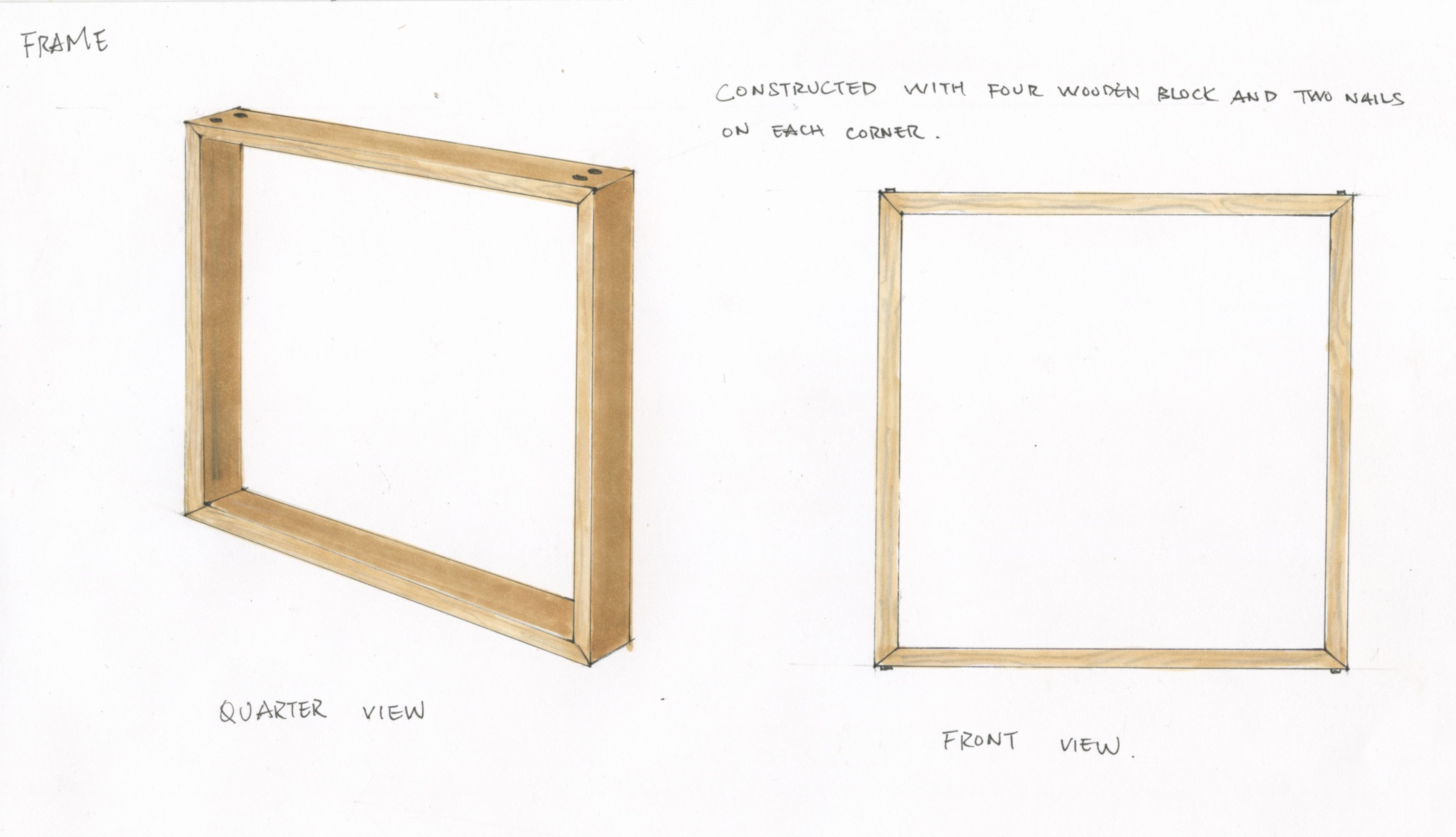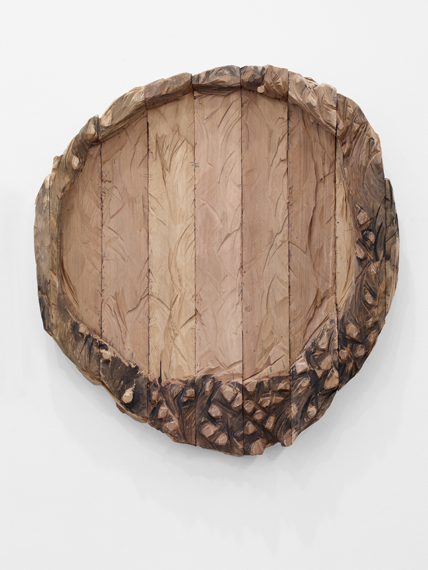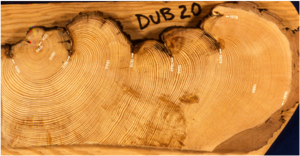Science
Julianne Rahimi's Art 7D Website
Homage to Natural Beauty
In describing “genetic essentialism,” Stephen Wilson explains how “some art embraces the
new possibilities [of breakthroughs in science that allow us to see the world differently]
and some recoils at what that may mean” (Wilson 2001, p. 95). Wilson was referring to the
ways in which we can now observe and interact with nature on a microscopic scale. In contrast,
Ursula von Rydingsvard’s work performs at the intersection of science and art on a monumental
scale. Building on these ideas, the concept of our project is to comment on the harmful effects
of deforestation on our climate.
Project Description
To demonstrate this, we will use wood that has been ravaged by fire and present it in an
aesthetically pleasing manner. We will be appropriating from von Rydingsvard’s work,
particularly Pietnascie. For our piece, we will use a layer of a tree stump as the centerpiece.
This is where audiences can see the scorched scars, as well as the rings that indicate the
age of the tree. Most trees have several scars, which we will use to our advantage. The
more scars, the more beautiful, in this situation. No part of the wood will be wasted. Using
the rest of the stump we will frame the centerpiece, with wood that we will smooth and polish
to draw a stark contrast between an organic shape and a structured one.
To create our piece, we will use the stumps of trees that have already been cut down for
other reasons. We do not want to contribute to the destruction of our natural forests, so
we will use wood that remains after a destructive effect of human irresponsibility. Since
our piece is exploiting the destruction, we did not want to contribute to it. Therefore,
we decided to use the tree stump.
To cut the layer of wood, we will need to use a saw. The layer should be thin, about 1 or
2 inches thick. The size of the centerpiece will depend on the size of the stump. We will
then take the leftover wood to create a frame for around the centerpiece. These pieces will
need to be cut and sanded down. This will smooth out the wood. We will then build the frame.
We will do this by cutting the wood into blocks with 45-degree angles on each end. To
assemble the frame we will glue the angles together to ensure they will hold. Then we will
nail two nails into the side exterior of the frame at each corner to hold the frame in place.
This process is similar to the process of making a canvas, except we will not staple the
canvas to the frame.
This finished piece will be displayed on a wall with the frame surrounding the center
circle of wood. Audience members will be able to view the piece hanging on the wall.
Ideally, it will evoke a feeling of shock in audiences. Burned wood has the ability to
create a sense of awe. It reveals the flaws and imperfections of human interaction with
nature. Our goal is to evoke this feeling in our audience and demonstrate how human
interference is destroying our forests and contributing to climate change. The goal is to
make the public aware of the deforestation and emphasize the long-term implications of this
destruction on our world.
Conceptual Significance
Just as White discusses how artists “seem attracted to the aesthetic forms of molecular
structures” and leverage the iconic nature of the genome to express social concerns, we will
leverage the ubiquity of wood and the characteristic grain, rings, and imperfections that
represent the beauty of nature (Wilson 2001, p. 95). By presenting opposing perspectives of
human interaction with nature, we will contribute to the understanding that reality is
subjective, just as Jonah Lehrer described Neils Bohr’s understanding that “the invisible
world of the electron was essentially a cubist world” (Lehrer, 2014).
Science researchers acknowledge that objective, “rational” models cannot account for human
behavior (Salmon, 1999, p. 406). Reality is mediated by human experience—our perceptions
are reality. In perceiving the natural world, we also change it. Our piece will embody this
duality of our perception of natural beauty juxtaposed against the ways we change those
very objects of pulchritude when we fail to appreciate and value them. As artists, we have
the rare opportunity to call attention to the ways in which human intervention in the
natural world can be harmful. We also have the ability to rescue some of this endangered
beauty by creating an aesthetic expression of our concern. At a time when scientists are
turning to cognitive science to explain human behavior, we have the ability to raise an
alarm to the dangers of irresponsible disregard for the environment, yet salvage and restore
beauty to the world. Our piece will demonstrate, as Clore Fellow describes in Cern: Where
Art and Science Collide, that “arts and science are similar in that they are expressions of
what it is to be human in this world. Both are driven by curiosity, discovery, the aspiration
for knowledge of the world or oneself” (Koek, 2011).
Taking cues from von Rydingsvard, we will meticulously frame both the aesthetic
value of the natural wood, as well as the harsh effects of humans’ destruction of forests
on the acceleration of climate change. The aesthetic frame represents the creative beauty
that humans can add to the world; the scorched portion of the salvaged wood serves as a
reminder of the harm that comes from irresponsible disregard for the environment, particularly
under the guise of “scientific progress.” Finally, the pristine portion of the wood that
retains its many rings and natural coloring represents persistent beauty, reminding us to
resist the short-term behaviors that will rob future generations of the chance to engage
with such natural wonders.
We intend this work to be a type of perfomative science. As Hans Diebner explains in
Performative Science and Beyond: Involving the Process in Research, performative science
is a means of conveying that which we are unable to describe adequately in words (Diebner,
2006). Our work will not only perform the experience of the material clash between nature
and mankind, but also will act as a persistent warning against short-term human action that
results in climate change that will soon be beyond our ability to repair.
References
Introduction to the Philosophy of Science by Kenneth F. Schaffner, Wesley C. Salmon, John
D. Norton and J. E. McGuire (Mar 1999)
Hans H Diebner "Performative Science" (excerpt from Performative Science and Beyond -
Involving the Process in Research, Springer Vienna Architecture, 2006)
Jonah Lehrer “The Future of Science is Art?” (Seed, 2007)
Ariane Koek “Cern: Where Art and Science Collide,” The Art Newspaper (Oct. 2011)
Stephen Wilson “Artists Working with Microbiology” (excerpt from Information Arts, The MIT
Press, 2001)
http://www.ursulavonrydingsvard.net
http://dl.dropboxusercontent.com/u/16269217/Web/Pyrodendrochronology/Home.html











